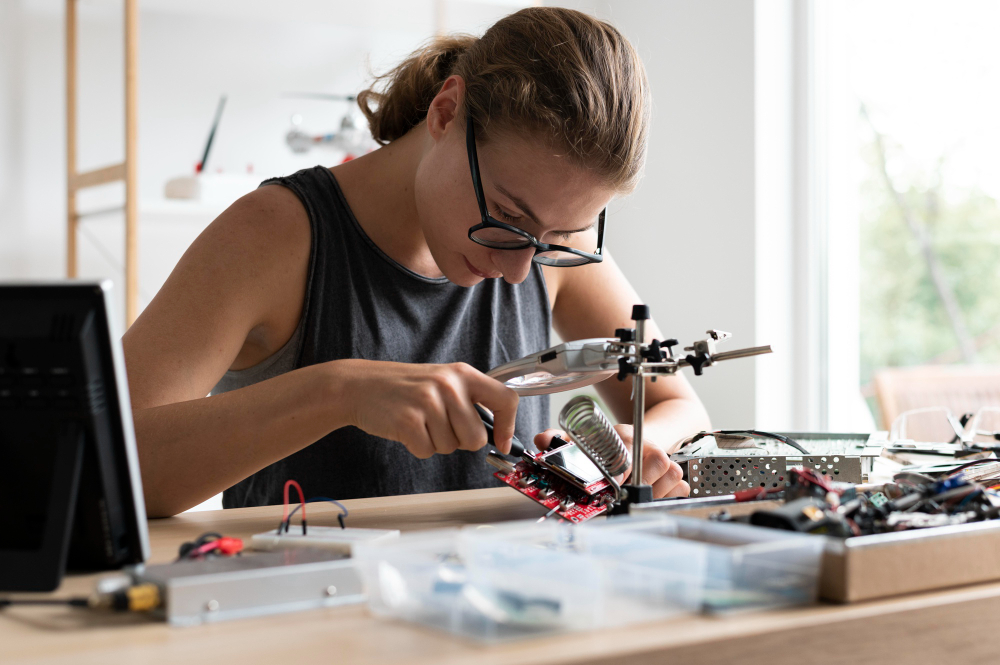
For decades, the robotics industry has been dominated by men—both in design rooms and in the products themselves. But that narrative is beginning to shift. A new generation of engineers, researchers, and innovators—many of them women—is finally asking: What if robots were built with women’s everyday challenges in mind? The result? A movement to create robotic technology that’s not just smarter but also safer, more intuitive, and deeply empathetic to women’s real-world needs.
One emerging application is personal safety. In countries where harassment and public insecurity remain everyday threats, innovators are designing wearable and drone-based technologies that can monitor surroundings, send alerts, and even deter attackers. Take, for instance, small wearable robots that discreetly sync with mobile apps to trigger location tracking or audio recording during unsafe encounters. These aren’t hypothetical inventions—they’re being built in labs led by female researchers who understand these anxieties firsthand.
Then there’s the home environment, where women are still often primary caregivers. Robotic assistants—once focused solely on convenience—are now evolving with empathy in mind. Some startups are building robots to assist with elderly care, not just through automation, but with social awareness—detecting changes in mood, movement, and health signals. One such AI-powered home companion was co-designed by a female-led team in Japan to cater specifically to elderly women living alone.
In the healthcare field, surgical robots designed by women for women are helping redefine precision in gynecological procedures. Instead of treating women’s anatomy as a variant of male design norms, these machines are built to respect and understand the unique structures and needs of female patients. The result? Fewer complications, shorter recovery times, and a better patient experience.
And it's not just physical robots—AI-powered bots are also being redesigned to understand and support women's experiences online. Emotional support chatbots developed with gender-based trauma in mind are helping survivors of abuse and harassment navigate healing. These bots aren't just code; they're compassion in machine form.
Why now? Because women in STEM are refusing to settle for exclusion. They’re designing robots with purpose, empathy, and equity at their core. They’re rejecting the default narrative that machines must be genderless to be neutral, and instead insisting that acknowledgment of gender can lead to more just and impactful technologies.
Still, the challenges are real. Funding for female-led robotics startups remains disproportionately low. Industry conferences are still male-heavy. And design assumptions often ignore female input. But the tide is turning. Universities are offering gender-inclusive robotics programs. Tech incubators are funding safety-focused innovations. And platforms like Women in Robotics are ensuring these engineers get the visibility—and support—they deserve.
The future of robotics doesn’t just belong in factories or high-tech labs—it belongs in homes, streets, hospitals, and communities where women live and thrive. And that future will be brighter, safer, and smarter when women aren’t just included in the conversation—they’re leading it.
THR Newsletters
Sign up for THR news straight to your inbox every day


